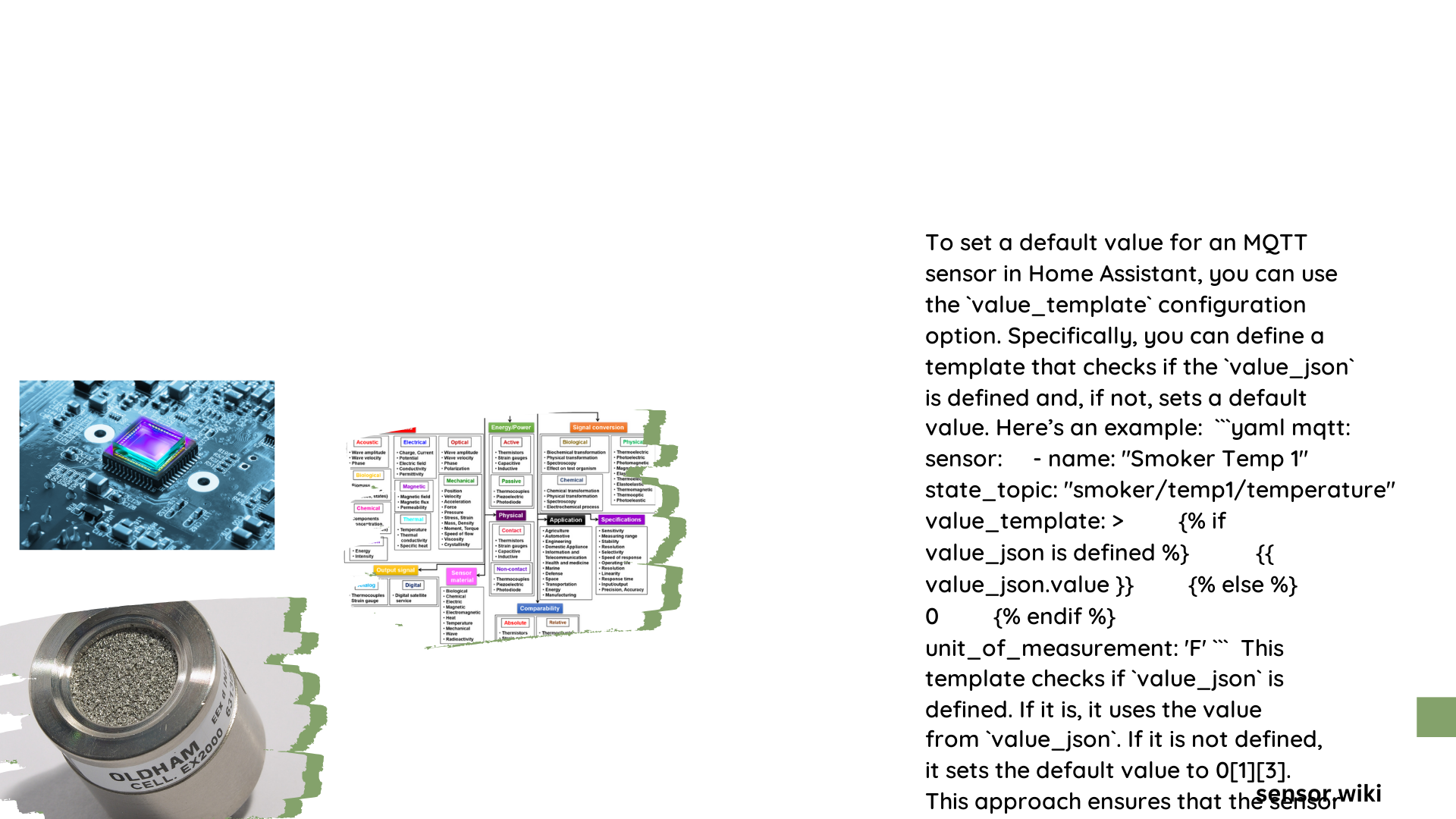Home Assistant MQTT sensors require intelligent default value strategies to manage scenarios where sensor data might be intermittent, unavailable, or invalid. By implementing sophisticated templating techniques, developers can ensure consistent sensor behavior, prevent system errors, and maintain reliable home automation workflows. This comprehensive guide explores advanced methods for configuring default values across various sensor types, addressing common challenges in MQTT sensor integration.
What Are Default Values in MQTT Sensors?
Default values in Home Assistant MQTT sensors are predefined fallback states used when no valid sensor data is received. These values help maintain system stability and prevent unexpected behavior during communication interruptions.
Why Configure Default Values?
| Scenario | Potential Issue | Default Value Solution |
|---|---|---|
| Sensor Offline | No data transmission | Preset static value |
| Invalid JSON | Parsing errors | Fallback state |
| Network Interruption | Missing measurements | Predefined placeholder |
How to Set Default Values for Different Sensor Types?

Temperature Sensor Configuration
sensor:
- platform: mqtt
name: "Room Temperature"
state_topic: "home/temperature"
value_template: >
{% if value_json.temperature is defined %}
{{ value_json.temperature }}
{% else %}
20.0
{% endif %}
unit_of_measurement: "°C"
Humidity Sensor Default Strategy
sensor:
- platform: mqtt
name: "Room Humidity"
state_topic: "home/humidity"
value_template: >
{% if value_json.humidity is defined %}
{{ value_json.humidity }}
{% else %}
50
{% endif %}
unit_of_measurement: "%"
What Template Techniques Enhance Sensor Reliability?
Conditional Value Extraction
- Use Jinja2 templating for dynamic value handling
- Implement type checking and validation
- Provide explicit fallback mechanisms
Advanced Templating Example
sensor:
- platform: mqtt
name: "Energy Consumption"
state_topic: "home/energy"
value_template: >
{% if value_json.watts is number %}
{{ value_json.watts }}
{% elif value_json.watts == None %}
0
{% else %}
{{ value_json.watts | float(0) }}
{% endif %}
unit_of_measurement: "W"
How to Handle Sensor Availability?
Availability Topic Configuration
sensor:
- platform: mqtt
name: "Motion Detector"
state_topic: "home/motion"
availability:
- topic: "home/status"
payload_available: "online"
payload_not_available: "offline"
Best Practices for MQTT Sensor Default Values
- Always define explicit fallback values
- Use type-safe template transformations
- Implement comprehensive error handling
- Consider sensor-specific default states
- Log and monitor sensor performance
Performance Considerations
- Minimize complex template logic
- Use efficient value extraction methods
- Implement reasonable update frequencies
- Monitor MQTT broker connection stability
Troubleshooting Common Issues
- Verify MQTT topic structure
- Check JSON payload formatting
- Validate sensor communication
- Review Home Assistant logs for errors
Recommended Tools
- MQTT Explorer
- Home Assistant Supervisor
- Visual Studio Code
- MQTT.fx
Conclusion
Configuring default values for Home Assistant MQTT sensors requires careful planning, understanding of templating techniques, and robust error handling strategies. By implementing the approaches discussed, you can create more resilient and reliable home automation systems.
